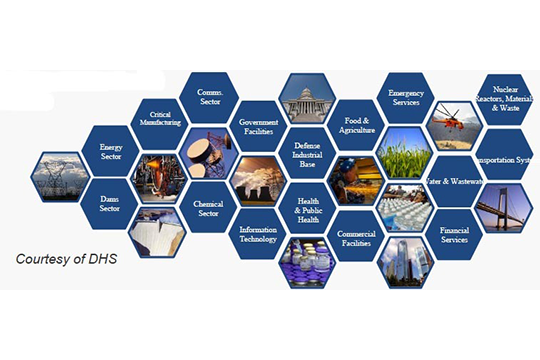Every day, all of us use this little technological miracle called GPS to take advantage of precise and trustable position, navigation and timing (PNT), all over the world.
More than 2,000 billion Euros of critical infrastructures around the world are directly dependent upon GPS every day – including public and private, aerospace and defense, smart cities, IoT, finance, industry, automotive, ITS, mobility, broadcast and telecom, and Cloud. All benefit from this accurate and trustable PNT service to support their operations.
Without accurate time on a digital terrestrial network, you would get a frozen image on your TV screen.
Without an accurate position on your car’s GPS, you would still be using paper maps.
Did you know?
5 days without GPS/GNSS means 5B£ of economic loss… just for the UK.
Did you know?
The expansion and dependence of GPS into our daily lives and in every public or private industry also comes with technology risks, called jamming (signal interfered with a jammer, meaning no GPS signal) and spoofing (GPS signal hacked intentionally, meaning signal deception).
Did you know?
Jammers and spoofers are strictly forbidden by law and subject to heavy fees (>$200.000 in the United States of America). But they are relatively easy and cost effective to buy and/or build.
For example, a truck driver might use one who to remain off-grid from his fleet manager. Or a teenager might be caught spoofing GPS to play Pokemon Go. It happens all the time.
A more serious GPS spoofing event happened recently in the Black Sea. It’s consequence was significant. Military navy ships went blind and were unable to locate each other.
To make it worse, using a GPS jammer could not only affect a single location … but could affect up to multiple miles of radius!
This risk is real and can impact all industries, globally.
If PNT infrastructures are using multiple GNSS constellations, are they resilient to such cyberattacks?
Actually, no. All GNSS constellations (GPS, Galileo, Beidou, Glonass, IRNSS, QZSS) are weak RF signals, easy to interfere with and easy to jam. Having multiple constellations allows you to get better sky visibility with more satellites, avoiding signal reception loss. However, it is ineffective to counter cyberattacks such as jamming and spoofing. In fact, your PNT infrastructure may experience jamming and spoofing and you might not even know it … until your critical infrastructure goes down. Without specific GPS jamming/spoofing monitoring, your system is blind and may distribute non-reliable PNT data.
What if a PNT infrastructure is combined with other sensors like IMUs (position and navigation) but still has holdover capabilities (for time)?
IMU (position and navigation) and Holdover (time) will maintain PNT distribution in case of signal reception loss. However, PNT data will drift over time and cannot be maintained at the required accuracy level without being synched with an accurate and authenticated PNT source like GPS or GNSS.
In the case of spoofing, IMU should be able to provide a position and navigation backup only, and only on the condition that the PNT infrastructure is able to detect spoofing. Otherwise, the immediate consequence will be that only corrupted PNT data will be distributed over your network…
What are PTA steps (Protect, Toughen, Augment) to secure a PNT infrastructure?
What Is BroadShield?
BroadShield is the #1 GPS cybersecurity solution in the market, benchmarked over the last ten years by the US DoD. As software, it is available for SecureSync time servers or can even be integrated into third-party equipment.
What Is STL?
STL is a satellite time and location service from the Iridium® constellation. It offers two major benefits for timing Infrastructures:
- RF Signal is 1,000 time stronger than GPS or GNSS, making it very hard to jam
- RF Signal is also encrypted, making it very hard to spoof
Learn more about BroadShield and STL.
- Assess the Resiliency of your PNT infrastructure to cyberattacks
Action item: Do a health check of your GPS Time and Location infrastructure. - Apply resilient PNT solutions and systems that fit within your infrastructure’s requirements
Action item: Secure GPS Source from jamming attempts with an anti-jam antenna. Filtering the GPS RF signal by eliminating jamming attempts with an anti-jam antenna will allow you to receive and maintain a trustable GPS reception source. This is a simple & cost-effective solution to apply.
Action item: Secure your GPS PNT service from jamming and spoofing with BroadShield and STL. Detecting GPS jamming and spoofing is key to automatically trigger and smoothly achieve a resilient PNT service. - Perform multiple PNT health checks per year to assess the resiliency of your PNT infrastructure and anticipate innovative cyberattack patterns.
Like viruses in the IT industry, PNT cyberattacks are evolving and proliferating. To combat them requires a focused, innovative and resilient PNT company as a partner. With a global presence, Orolia will support your operations to ensure your infrastructure and operations are resilient.
For more information about Orolia’s resilient PNT systems and solutions, contact us.



